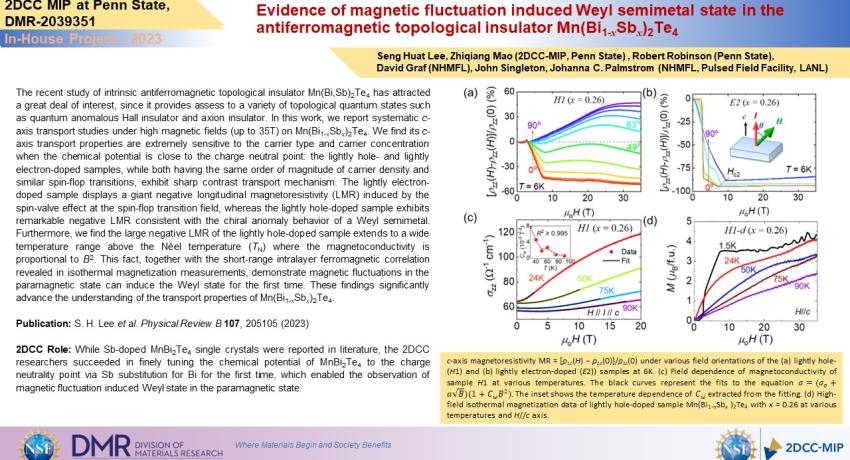The recent study of intrinsic antiferromagnetic topological insulator Mn(Bi,Sb)2Te4 has attracted a great deal of interest, since it provides access to a variety of topological quantum states such as quantum anomalous Hall insulator and axion insulator. In this work, we report systematic c-axis transport studies under high magnetic fields (up to 35T) on Mn(Bi1-xSbx)2Te4. We find its c-axis transport properties are extremely sensitive to the carrier type and carrier concentration when the chemical potential is close to the charge neutral point: the lightly hole- and lightly electron-doped samples, while both having the same order of magnitude of carrier density and similar spin-flop transitions, exhibit sharp contrast transport mechanism. The lightly electron-doped sample displays a giant negative longitudinal magnetoresistivity (LMR) induced by the spin-valve effect at the spin-flop transition field, whereas the lightly hole-doped sample exhibits remarkable negative LMR consistent with the chiral anomaly behavior of a Weyl semimetal. Furthermore, we find the large negative LMR of the lightly hole-doped sample extends to a wide temperature range above the Néel temperature (TN) where the magnetoconductivity is proportional to B2. This fact, together with the short-range intralayer ferromagnetic correlation revealed in isothermal magnetization measurements, demonstrate magnetic fluctuations in the paramagnetic state can induce the Weyl state for the first time. These findings significantly advance the understanding of the transport properties of Mn(Bi1-xSbx)2Te4.
2DCC Role: While Sb-doped MnBi2Te4 single crystals were reported in literature, the 2DCC researchers succeeded in finely tuning the chemical potential of MnBi2Te4 to the charge neutrality point via Sb substitution for Bi for the first time, which enabled the observation of magnetic fluctuation induced Weyl state in the paramagnetic state.
What Has Been Achieved: We found evidence of magnetic fluctuation induced Weyl semimetal (WSM) state in the paramagnetic state of the magnetic topological insulator Mn(Bi1-xSbx)2Te4 with x~0.26 for the first time.
Importance of the Achievement: The finding of magnetic fluctuation induced WSM state in Mn(Bi1-xSbx)2Te4 indicates that magnetic fluctuations, when strong enough, can break time reversal symmetry and lead to bands’ spin splitting, which points to a new direction for seeking novel topological quantum states in materials with nontrivial topology and magnetic fluctuations.
Unique Feature(s) of the MIP that Enabled this Achievement: The high-quality Mn(Bi,Sb)2Te4 crystals with controlled chemical potential produced at 2DCC enabled us to reveal the Weyl state above TN in lightly hole-doped sample.
Publication: Seng Huat Lee, David Graf, Robert Robinson, John Singleton, Johanna C. Palmstrom, and Zhiqiang Mao, Evidence of magnetic fluctuation induced Weyl semimetal state in the antiferromagnetic topological insulator Mn(Bi1-xSbx)2Te4, Physical Review B 107, 205105 (2023). https://doi.org/10.1103/PhysRevB.107.205105.
The study is based upon research conducted at The Pennsylvania State University Two-Dimensional Crystal Consortium–Materials Innovation Platform (2DCC-MIP), which is supported by NSF Cooperative Agreement No. DMR-2039351. Z.Q.M. and R.R. acknowledge the support from NSF under Grant No. DMR 2211327. Work at the National High Magnetic Field Laboratory was supported by NSF Cooperative Agreements No. DMR-1644779 and No. DMR-2128556, the U.S. Department of Energy (DOE), and the State of Florida. J.S. acknowledges support from the DOE Basic Energy Sciences FWP “Science of 100 T.”
